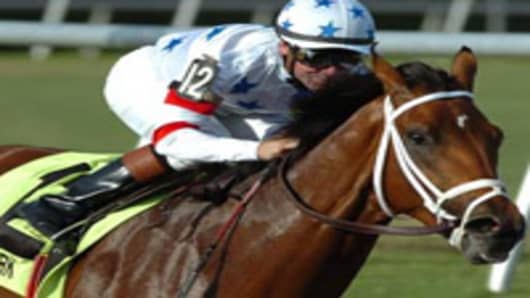Two years ago, when Big Brown went into the Belmont with a chance to win the first Triple Crown in 30 years, his owners said a win would make him a $100 million horse, thanks to huge stud fees they'd be guaranteed.
Big Brown of course didn't win, so those numbers were never talked about again.
But if the horse did win it all, it would have been interesting to see how much the horse's projected earnings would have been impacted by the economic crisis that started to rear its ugly head just three months after the Belmont.
As discretionary income has diminished the horse racing industry has gotten clobbered.
Sales are still down 40 to 50 percent and the stallion market, which ultimately drives the value of a Triple Crown horse, has been badly affected. So much so that that that 50 percent haircut would apply to the winner of a Triple Crown should it happen this year. According to Joe Drape, the horse racing writer for the New York Times, a horse that does the three-race sweep for the first time since Affirmed in 1978 will be worth about $40 million.
Big Brown, if he won it all, would have likely earned at least $100,000 per live foal. The horse opened with a stud fee of $65,000. That's now down to $55,000.
Smarty Jones, which won both the Derby and Preakness in 2004, saw his stud fee open at $100,000. Today, his schedule is open at $10,000 per live foal.
The top of the market was equally as affected.
From 2002 to 2007, Storm Cat was able to command a $500,000 stud fee. He was retired in 2008, and the top stud fee was immediately cut in half to A.P. Indy's $250,000, which held up through 2009. But in 2010, A.P. Indy's price has been slashed to $150,000 and the tolerance of the market for stud fees above $100,000 has cooled, with only seven horses now commanding at least that fee today. And the $150,000 price has become the absolute top of the market, enjoyed by A.P. Indy, Street Cry and Dynaformer.
Still, a $40 million payday is not all that bad, especially if a horse like Noble's Promise does it. The horse was bought for $10,000 by a syndicate as a weanling with insurance money left over from one of their horses that had to be euthanized. One of the reasons, they never sold it? Because of the economic crisis no one wanted it.
Questions? Comments? SportsBiz@cnbc.com



